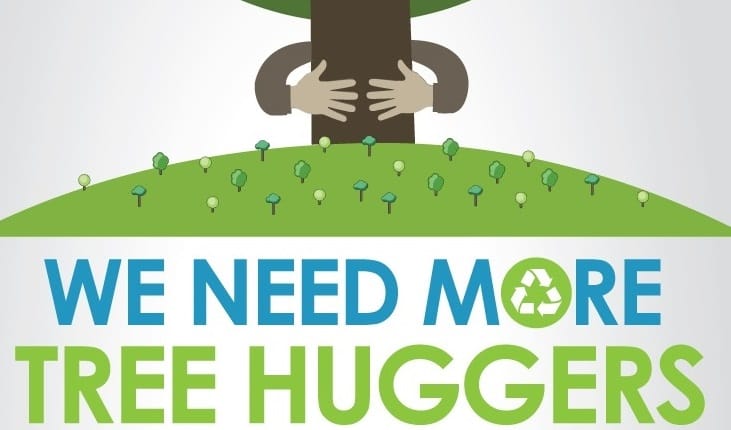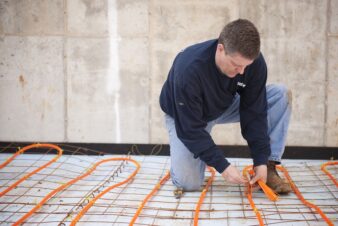 By Francesca Dunbar, Group Marketing Director, McWane Plumbing Group
By Francesca Dunbar, Group Marketing Director, McWane Plumbing Group
The “green and sustainable” building movement has evolved from a marginal movement to fully evolving as an acceptable mainstream force. The increased adoption of sustainable building materials is having a positive impact as they have many attributes including; increasing energy efficiency, ensuring life safety and even improving building air quality. Companies are continuously looking for ways to be “green” and the appearance to be friendlier to the environment. It’s just good business!
For many, “green” conjures up visions of the hippie counter culture movement with granola eating tree-huggers that adorn themselves with tie-dyed t-shirts and ugly sandals. No offense to those that live this lifestyle as they spurred the “green” movement and were way ahead of the curve as visionaries. Now, it’s widely acceptable to embrace our inner “GREENIE” in business by adopting strategies for a long-term sustainability plan. The scrap metal dealers also saw the future in sustainability as they carefully put in place a large network of yards to ensure a steady stream of scrap supply. Not only has the general public demanded change but the market has been the driving force in green and sustainable building practice. In the recent past, a number of state and local governments began to adopt regulations and initiatives focusing on green and sustainable building where new codes and laws have been put in place such as the Energy Policy Act of 2005 and the Energy Independence and Security Act (EISA 2007). But there are also standards such as ASTM E2432 Standard Guide for the General Principles of Sustainability Relative to Building and ASHRAE 189.1 Standard for Design of Green Building – these codes and standards ensure for optimization of energy use, building space and indoor environmental quality (IEQ). It is government regulation that will push this movement forward. Now, Builders, Developers and Contractors are taking a look at re-evaluating building materials and opting to use sustainable products that are not only non-toxic, but also non-combustible.

This is something companies such as AB&I Foundry, a leading American producer of cast iron pipe and fittings, has been doing for decades. Their products are made from 100-percent post-consumer scrap metal and even used pipe and fittings are recyclable bringing it back full-circle. They are basically a GIANT recycler diverting discarded waste such as engine blocks, wheels, and other scrap metals and then melt it in their cupola in order to make cast iron pipe and fittings. These materials otherwise would have ended up in landfills. There are significant advantages to recycling and repurposing metals as it can be sourced within 50-miles of the foundry and AB&I was one of the earliest pioneers of the upcycling movement. The advantages of metallic piping far outweighs the perceived benefits of low-cost plastic as cast iron is durable, it’s non-combustible and it’s 100% recyclable at the end of service life. The advantages of metallic piping far outweighs the perceived benefits of low-cost plastic as cast iron is durable, it’s non-combustible and it’s 100% recyclable at the end of service life. Whereas plastics are sourced from petroleum, continuously off-gas toxins and are combustible releasing toxins when burned.
The plumbing industry had a motto with the iconic plumber silhouetted by the moon “The Plumber Protects the Health of the Nation” – this is true as the lack of sanitation brought disease wiping out hundreds of thousands of people throughout history. The protection and conservation of water is paramount to today’s society and building owners and developers have implemented water efficiencies from low flow toilets to water efficient fixtures. Also measures are being taken to reclaim graywater through recovery systems using the non-potable water for toilet flushing and landscape irrigation.
Science is a driving factor in identifying ways to produce better materials. There’s a project called Materials for Life (M4L), researchers from the School of Engineering at the University of Cardiff, in Wales are undergoing tests for self-healing concrete technologies where shape-memory polymers can be activated by electrical current, one with healing agents made from both inorganic and organic compounds and another with capsules containing bacterial and healing agents. The goal is to develop an autonomous infrastructure for roads, tunnels, bridges and buildings that can self-repair without human intervention. A sort of A.I. for building materials – the creation of sustainable and resilient systems that continually monitor, regulate, and adapt and then repair themselves.
The construction of healthier buildings is driving owners and developers as they are realizing the benefits of healthier building and the attraction for occupants that are increasingly more aware of their environment. There are simple ways to eliminate the presence of volatile organic compounds (VOCs) in building products that benefit not only occupants, but in a fire also reduce exposure to first responders. It’s no coincidence that schools and high-rise buildings use cast iron soil pipe and fittings for the drain, waste and vent plumbing systems as plastic is a known toxic product and life safety is paramount.
Products include; wall coverings, flooring and even upholstered furnishings. Many products continue to off-gas vapors and gases and these can affect occupants’ health from respiratory tract issues, headaches and dizziness and even long-term exposure that can cause organ damage. Green is not a fade, it’s a movement that is environmentally friendly and is here to stay. There was a movement to “get the lead out” of plumbing fixtures that was a known cause to contaminating drinking water.
Furthermore, In order to create more transparency in the manufacturing of building products, programs have been developed to declare that products meet certain environmental standards – Environmental Product Declarations (EPDs) and Health Product Declarations (HPD). They concentrate on disclosing the product’s list of ingredients or recipe. While EPDs focus on the impact of the product on the environment from cradle to grave in their lifecycle. The EPDs focus on the Life Cycle Assessment or (LCA).
In 2014, the WELL Building Standard was launched with the mission to enhance the health and well-being of building occupants. This newly implemented standard not only measures, certifies and monitors occupant health and well-being but it also addresses key areas including; air, water, nourishment, light, fitness and comfort — taking the green and sustainable practices to their highest level. In a recent study conducted by Booz Allen Hamilton for the USGBC, they expect green construction spending to increase from $150.6 billion in 2015 to $224.4 billion in 2018. The study also predicts that between 2015 and 2018, green construction will generate $303.4 billion in Gross Domestic Product (GDP), support 3.9 million jobs and provide $268.4 billion in labor earnings.
Now, isn’t it time to embrace the “green” movement and start reducing the toxic load of buildings?
About Francesca Dunbar
Francesca has been the Group Marketing Director of McWane Plumbing Group since 2012. She has a diverse background building and promoting companies with innovative and strategic leadership. In 2016 she was recognized as Industry Leading Ladies. She has spent decades building a respected reputation with major corporations and non-profit foundations. Her roots were deep in leadership for a high-tech industry before departing corporate life in 2000 to launch her marketing consulting career. She is also passionate about giving back and served on several non-profit foundation boards. As an officer on the board of directors for The National Brain Tumor Foundation, she was an integral member of the team that led a successful merger. Dunbar is also a published writer of industry articles and technical papers, and previously a contributing editor for a lifestyle magazine. Dunbar is a member of ASA, American Society of Plumbing Engineers and trained Installer of fire protection products.




Join the conversation: